Brazil is a country of vibrant culture, stunning natural wonders, and bustling cities. Whether you’re looking to relax on golden beaches, explore the Amazon rainforest, or immerse yourself in lively urban life, this 7-day itinerary will ensure you experience the best of Brazil.
Itinerary for Brazil
Table Of Content
This blog contains affiliate links, which means I may earn a commission if you make a purchase through these links, at no additional cost to you.
Day 1: Arrival in Rio de Janeiro & Christ the Redeemer
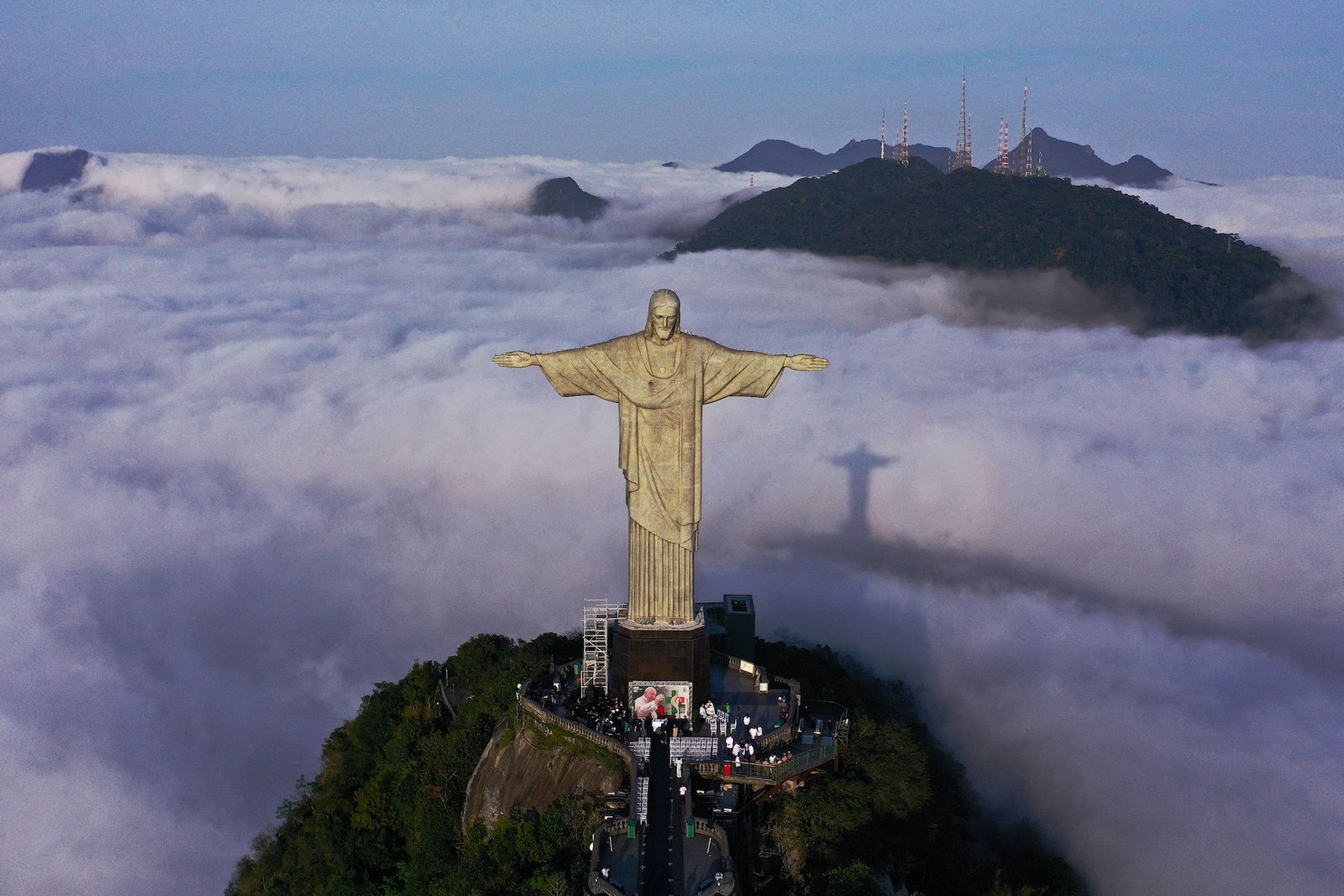
Start your Brazilian adventure in Rio de Janeiro, one of the most iconic cities in the world.
Rio de Janeiro, often called the "Marvelous City," is one of the most breathtaking destinations in the world. With its stunning beaches, lively culture, and iconic landmarks, Rio captivates visitors from the moment they arrive. One of the must-see attractions that defines this city’s skyline is the magnificent Christ the Redeemer statue. Whether you're visiting for the first time or returning for another adventure, exploring this landmark is the perfect way to begin your journey in Brazil.
Arriving in Rio de Janeiro
Getting to the City
Most international travelers arrive at Rio de Janeiro’s Galeão International Airport (GIG), which is well-connected to major cities worldwide. From the airport, you can reach the city center using:
- Taxis & Ride-Sharing Apps – Uber and local taxis offer convenient and safe options.
- Airport Shuttle Services – Many hotels provide private transfers.
- Public Transport – Buses and the BRT system connect the airport to key districts.
Where to Stay
Rio offers a variety of accommodations to suit all budgets. The best areas to stay include:
Discover unbeatable hotel deals for your next adventure—compare prices and book your perfect stay effortlessly on our platform today!
- Copacabana & Ipanema – Famous for their beaches and vibrant nightlife.
- Santa Teresa – A charming hillside neighborhood with boutique hotels and colonial architecture.
- Leblon – A more upscale area with luxury hotels and fine dining options.
Visiting Christ the Redeemer
A Symbol of Faith and Beauty
Christ the Redeemer (Cristo Redentor) is one of the New Seven Wonders of the World and a symbol of Brazil. Perched atop Mount Corcovado at 700 meters (2,300 feet) above sea level, the statue stands 30 meters (98 feet) tall with outstretched arms, offering a breathtaking panoramic view of the city.
How to Get There
There are several ways to reach Christ the Redeemer:
- Corcovado Train – The most scenic route, offering a 20-minute ride through the lush Tijuca National Park.
- Official Vans – Departing from Copacabana, Largo do Machado, or Paineiras.
- Hiking – Adventurous travelers can trek up through Tijuca Forest, a rewarding but challenging route.
Best Time to Visit
- Early Morning or Late Afternoon – Avoid crowds and capture stunning sunrise or sunset views.
- Weekdays – Fewer tourists compared to weekends and holidays.
What to Expect at the Summit
Upon reaching the top, you'll be greeted by breathtaking 360-degree views of Rio’s coastline, Sugarloaf Mountain, and the vibrant city below. The statue itself is a marvel, with intricate details and an imposing presence that leaves visitors in awe.
Photography Tips:
- Use a wide-angle lens to capture both the statue and the scenic backdrop.
- Visit on a clear day for the best visibility.
- Arrive early to avoid large crowds in your photos.
Exploring Nearby Attractions
After visiting Christ the Redeemer, consider exploring other nearby attractions:
- Dona Marta Viewpoint – Offers an alternative panoramic view with fewer crowds.
- Tijuca National Park – Home to waterfalls, hiking trails, and exotic wildlife.
- Santa Teresa Neighborhood – A charming area with colonial streets, art galleries, and cozy cafes.
Morning:
- Arrive at Galeão International Airport and transfer to your hotel in Copacabana or Ipanema.
- Take a morning stroll along Copacabana Beach and soak in the vibrant atmosphere.
Afternoon:
- Visit the world-famous Christ the Redeemer statue for breathtaking panoramic views of Rio.
- Explore Santa Teresa, a charming hillside neighborhood known for its bohemian vibe and colonial architecture.
Evening:
- Dine at a traditional churrascaria (Brazilian steakhouse) and enjoy local delicacies.
- Head to Lapa for a taste of Rio’s legendary nightlife, featuring samba clubs and live music.
Day 2: Sugarloaf Mountain & Tijuca National Park
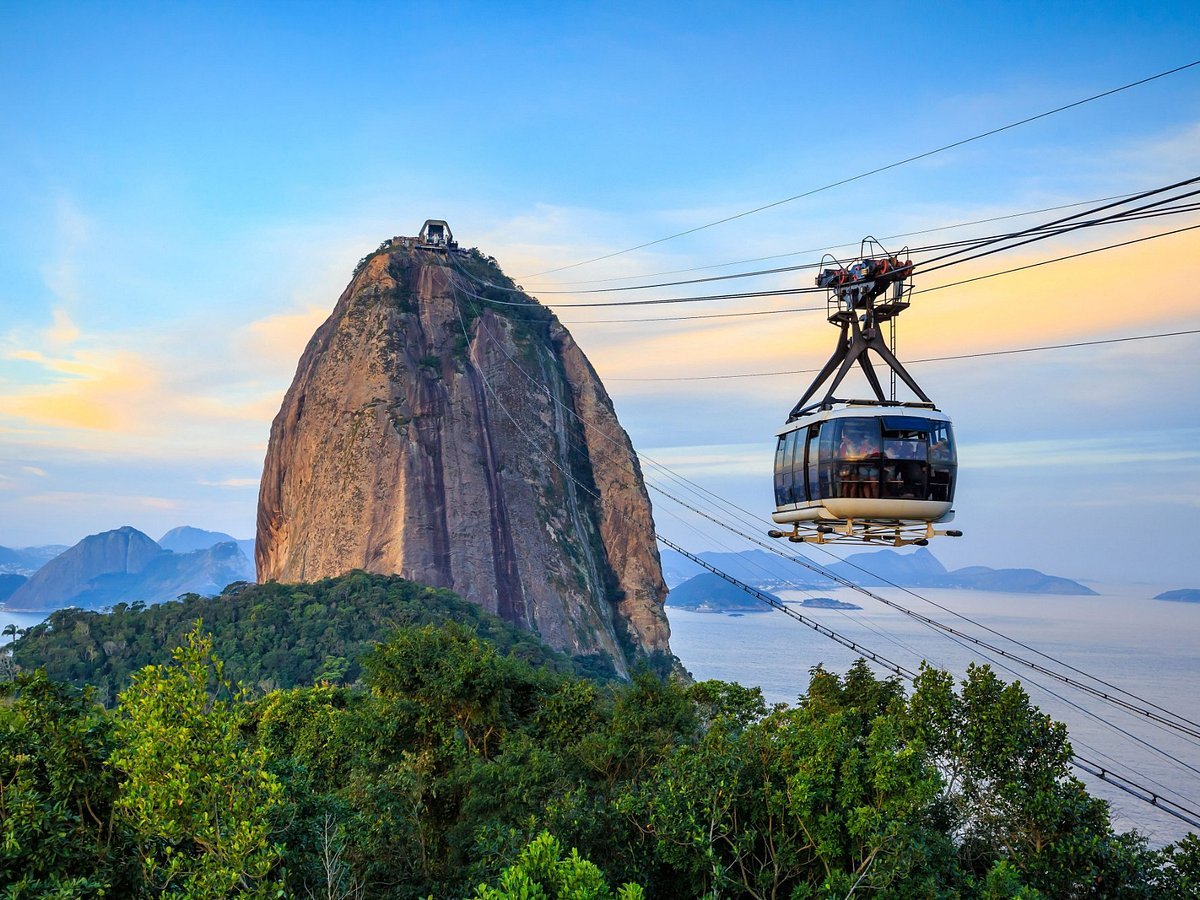
Rio de Janeiro is a city of contrasts, where towering mountains meet golden beaches, and lush rainforests blend seamlessly with urban landscapes. Among its many natural wonders, two stand out as must-visit destinations: Sugarloaf Mountain and Tijuca National Park. These iconic sites offer breathtaking views, outdoor adventures, and a glimpse into Brazil’s incredible biodiversity. Whether you're a nature lover, adventure seeker, or photography enthusiast, exploring these landmarks will be a highlight of your Rio de Janeiro experience.
Sugarloaf Mountain: A Panoramic Wonder
Introduction to Sugarloaf Mountain
Sugarloaf Mountain (Pão de Açúcar) is one of Rio’s most famous landmarks. Rising 396 meters (1,299 feet) above Guanabara Bay, it provides visitors with stunning panoramic views of the city, beaches, and surrounding mountains. This granite peak is a symbol of Rio and offers an unforgettable experience for anyone who visits.
How to Get to Sugarloaf Mountain
- Cable Car Ride: The most popular way to reach the summit is by taking the two-stage cable car. The first ride goes from Praia Vermelha to Morro da Urca, where you can explore observation decks and restaurants. The second cable car ascends to the top of Sugarloaf Mountain, offering unparalleled views of Rio’s coastline.
- Hiking Option: For adventure enthusiasts, hiking up Morro da Urca is a rewarding alternative. The 30–40 minute hike takes you through a scenic forest trail before reaching the first cable car station, where you can continue to Sugarloaf by cable car.
Best Time to Visit
- Sunset: For the most spectacular views, visit in the late afternoon and watch the sun set over the city while the lights of Rio come to life.
- Early Morning: If you prefer fewer crowds and a peaceful experience, visit in the early morning.
Highlights at Sugarloaf Mountain
- Panoramic views of Copacabana Beach, Christ the Redeemer, and the Atlantic Ocean
- Cafés and observation decks for relaxation
- Wildlife sightings, including marmosets and exotic birds
Tijuca National Park: The World’s Largest Urban Rainforest
Introduction to Tijuca National Park
Tijuca National Park is a lush tropical paradise covering 39 square kilometers (15 square miles) and is considered the largest urban rainforest in the world. It is home to diverse wildlife, hidden waterfalls, and hiking trails that lead to breathtaking viewpoints.
Find the best hotel deals for your next trip—compare prices from top sites and book your perfect stay all in one place!
How to Get There
- By Car: The easiest way to reach the park is by taxi or ride-sharing services, which can take you to major trailheads.
- By Tour: Many guided tours include transportation and a deeper understanding of the park’s ecosystem.
Best Attractions in Tijuca National Park
- Vista Chinesa: A picturesque lookout point offering a stunning view of Rio’s skyline.
- Cascatinha Taunay: A beautiful waterfall surrounded by dense forest, perfect for a refreshing stop.
- Pedra Bonita: A short hike leading to one of the best viewpoints in Rio.
- Pico da Tijuca: The highest peak in the park, offering breathtaking panoramic views for those who enjoy a challenging hike.
Wildlife & Nature
Tijuca National Park is home to an array of exotic animals, including monkeys, toucans, and colorful butterflies. Its rich biodiversity makes it an excellent place for nature enthusiasts and photographers.
Morning:
- Take a cable car up Sugarloaf Mountain for stunning views of the city and Guanabara Bay.
Afternoon:
- Explore the lush Tijuca National Park, home to beautiful waterfalls, hiking trails, and exotic wildlife.
- Visit the iconic Escadaria Selarón, a colorful mosaic staircase in the heart of Rio.
Evening:
- Enjoy a sunset at Ipanema Beach with a refreshing caipirinha in hand.
- Have dinner at a beachfront restaurant featuring fresh seafood.
Day 3: Iguazu Falls – Natural Wonder of Brazil
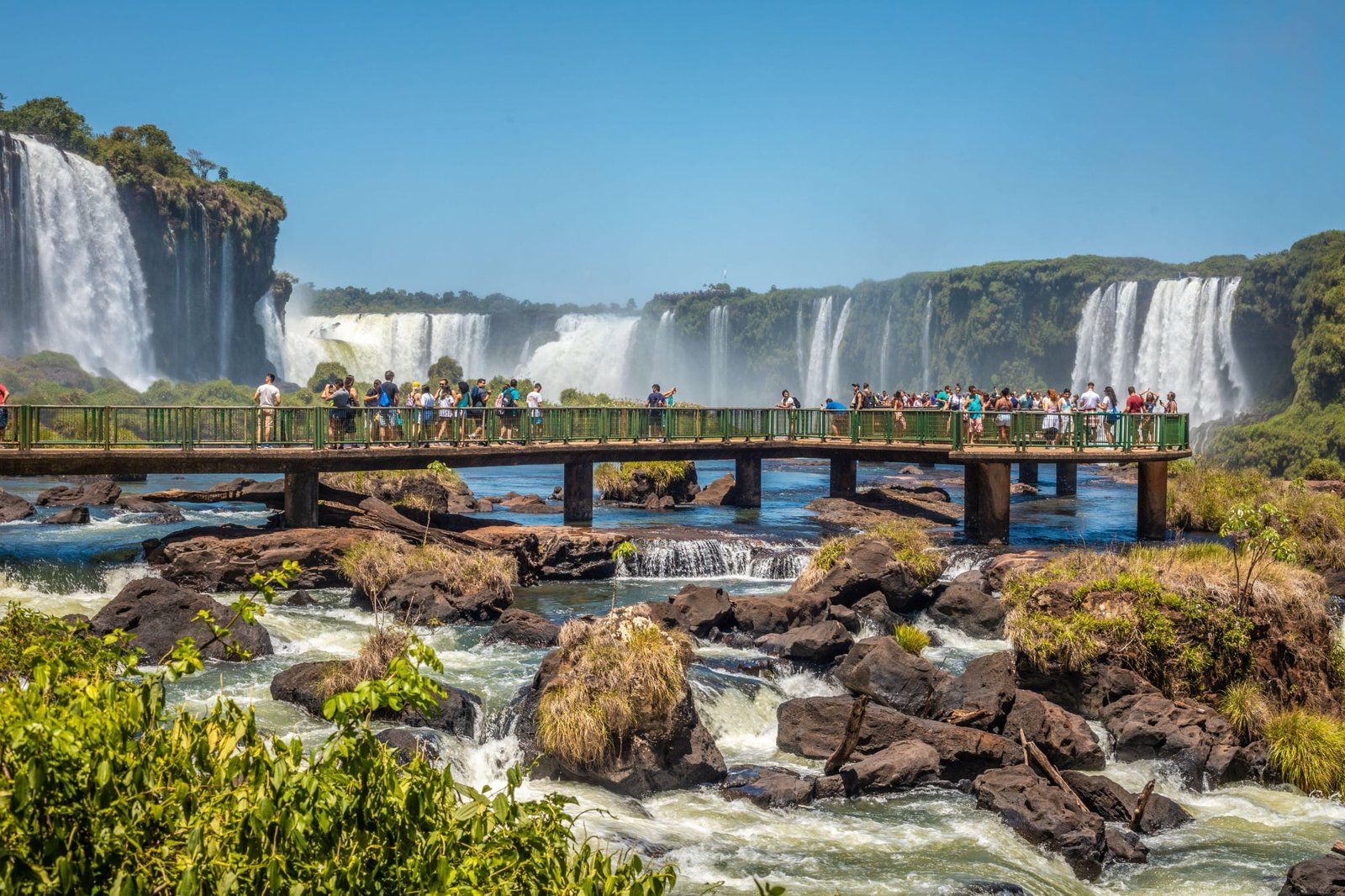
Nestled on the border of Brazil and Argentina, Iguazu Falls is one of the most awe-inspiring natural wonders of the world. Comprising 275 individual waterfalls spread across nearly 2.7 kilometers (1.7 miles), this magnificent cascade system is a UNESCO World Heritage Site and one of the New Seven Natural Wonders of the World. Visiting Iguazu Falls from the Brazilian side offers breathtaking panoramic views, thrilling adventure opportunities, and a chance to witness the sheer power and beauty of nature.
Getting to Iguazu Falls
By Air
The nearest airport to the Brazilian side of the falls is Foz do Iguaçu International Airport (IGU), which receives domestic flights from major cities like São Paulo and Rio de Janeiro, as well as some international connections.
By Land
For those traveling from Argentina or Paraguay, border crossings are relatively straightforward, with buses, taxis, and private transfers available.
Exploring Iguazu Falls: The Brazilian Side
While the majority of the falls lie within Argentina, the Brazilian side offers the most spectacular panoramic views. The well-maintained walkways and viewpoints provide an unforgettable experience of this natural wonder.
Best Viewing Points
- Devil’s Throat (Garganta do Diabo): The most dramatic and powerful section of Iguazu Falls, this U-shaped cascade plunges 80 meters (262 feet) into the abyss, creating an intense mist and thunderous roar.
- Main Walkway: A scenic 1.5-kilometer (0.9-mile) trail that provides various lookout points for stunning photographs.
- Observation Tower: Located near the main entrance, this spot offers a panoramic perspective of the entire falls system.
Adventure Activities
For thrill-seekers, Iguazu Falls offers several exciting activities:
Find the best hotel deals for your next trip—compare prices across top travel sites and book your ideal stay instantly on [travelbloger.net]!
- Boat Safari: Get up close to the falls with a boat ride that takes you right under the cascades.
- Helicopter Tour: Experience the grandeur of Iguazu Falls from above with a scenic helicopter flight.
- Wildlife Exploration: The surrounding Iguazu National Park is home to exotic wildlife, including toucans, monkeys, and jaguars.
Best Time to Visit
- December to February (Summer): The falls are at their most powerful due to heavy rains, but the weather can be hot and humid.
- March to June (Autumn): A great balance of water flow and comfortable temperatures, with fewer crowds.
- July to September (Winter): Cooler weather and lower humidity make hiking and exploring more pleasant.
- October to November (Spring): Ideal for photography, with lush greenery and moderate water levels.
Tips for Visiting Iguazu Falls
- Wear Waterproof Gear: The mist from the falls can be intense, so a rain jacket or poncho is recommended.
- Bring a Camera & Protection: Capture the beauty of the falls, but ensure your camera or phone is waterproof.
- Arrive Early: The park can get crowded, so visiting early in the morning offers a more tranquil experience.
- Stay Hydrated: The tropical climate can be hot and humid, so carry water with you.
Morning:
- Take a short flight to Foz do Iguaçu to witness the breathtaking Iguazu Falls, one of the world’s largest waterfall systems.
Afternoon:
- Explore the Brazilian side of the falls, offering spectacular panoramic views.
- Take a boat tour for an up-close experience with the cascading waters.
Evening:
- Check into a hotel near the falls and enjoy a relaxing evening with Brazilian cuisine.
Day 4: Amazon Rainforest Adventure
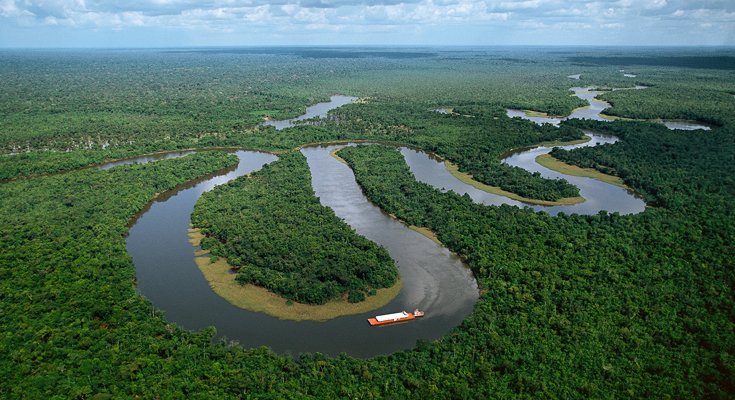
The Amazon Rainforest, often referred to as the “lungs of the Earth,” is one of the most biodiverse and awe-inspiring places on the planet. Spanning nine countries and covering over 5.5 million square kilometers, this vast tropical paradise is home to exotic wildlife, indigenous cultures, and breathtaking natural wonders. Embarking on an Amazon Rainforest adventure is a once-in-a-lifetime experience that immerses travelers in the raw beauty and untamed wilderness of the world’s largest rainforest.
Getting to the Amazon
By Air
The primary gateway to the Brazilian Amazon is Manaus, the capital of the Amazonas state. Eduardo Gomes International Airport (MAO) receives domestic and international flights, making it the perfect starting point for your adventure.
By Boat
For those seeking a more immersive journey, riverboats from cities like Belém or Santarém offer an authentic way to reach deep into the heart of the Amazon.
Top Amazon Rainforest Experiences
1. Exploring the Meeting of the Waters
One of the most fascinating natural phenomena in the Amazon, the Meeting of the Waters occurs where the Rio Negro and the Solimões River converge but do not mix due to their different temperatures and densities. Boat tours offer an up-close look at this stunning contrast.
2. Wildlife Spotting and Jungle Trekking
The Amazon is home to over 400 billion trees and thousands of unique species. Guided jungle treks provide opportunities to spot:
Looking for budget-friendly flights or all-in-one travel packages? Check out our top picks and start planning your perfect getaway today!
- Pink river dolphins
- Howler monkeys
- Colorful macaws and toucans
- Caimans and giant anacondas
- Poison dart frogs and exotic insects
3. Canoeing Through the Amazon River
One of the best ways to experience the rainforest is by paddling through its intricate network of waterways. Canoe trips allow visitors to glide silently through flooded forests and narrow channels while observing exotic wildlife up close.
4. Visiting an Indigenous Community
The Amazon is home to numerous indigenous tribes that have preserved their ancient traditions and way of life. Many tours offer respectful visits to indigenous villages where travelers can learn about traditional medicine, craftsmanship, and local customs.
5. Night Safari in the Jungle
As the sun sets, the Amazon transforms into a mysterious and vibrant world. Guided night safaris reveal nocturnal creatures such as:
- Glowing fireflies and bioluminescent fungi
- Tarantulas and tree frogs
- Jaguar sightings (for the lucky few!)
Best Time to Visit the Amazon
- June to November (Dry Season): Best for jungle treks and wildlife spotting, with lower water levels and more accessible trails.
- December to May (Wet Season): Ideal for boat excursions and canoe trips, as the rivers swell and create a stunning waterworld experience.
Essential Travel Tips for Your Amazon Adventure
- Pack light but wisely: Bring quick-dry clothing, insect repellent, waterproof gear, and binoculars for wildlife spotting.
- Stay hydrated and carry purification tablets.
- Choose an eco-friendly lodge or guided tour to minimize your environmental impact.
- Respect the local wildlife and indigenous communities.
Morning:
- Fly to Manaus, the gateway to the Amazon Rainforest.
- Visit the historic Teatro Amazonas, a stunning opera house.
Afternoon:
- Embark on an Amazon River boat tour and explore the Meeting of Waters, where the Rio Negro and Solimões Rivers meet but don’t mix.
Evening:
- Stay overnight in an eco-lodge deep in the jungle for a true Amazonian experience.
- Enjoy a guided night walk to spot nocturnal wildlife.
Day 5: Salvador – The Heart of Afro-Brazilian Culture
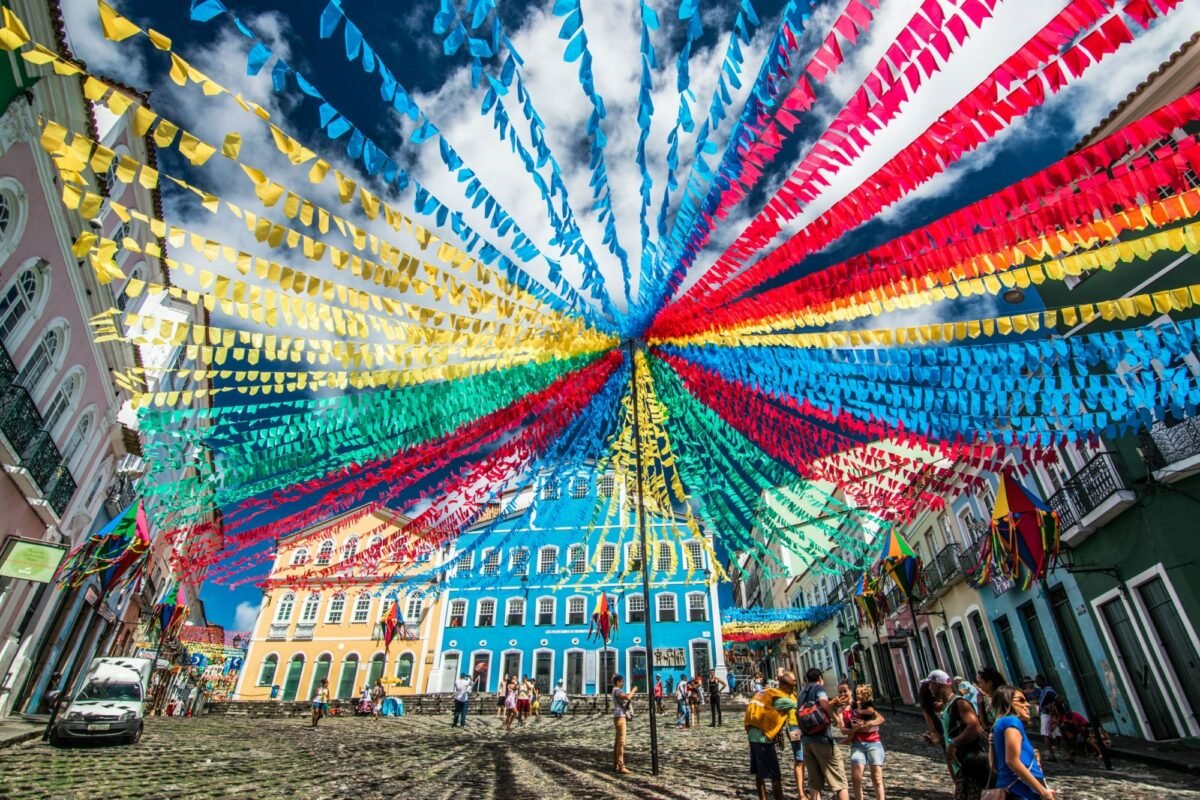
Salvador, the vibrant capital of the Brazilian state of Bahia, is a city where history, music, dance, and spirituality come together in a captivating cultural fusion. Known as the heart of Afro-Brazilian culture, Salvador boasts colonial architecture, pulsating rhythms of samba and axé, and deep-rooted African traditions that shape its identity. A visit to Salvador offers an unforgettable journey through Brazil’s rich heritage and dynamic modern expressions.
A Glimpse into History
Founded in 1549, Salvador was Brazil’s first capital and a major port in the transatlantic slave trade. The African influence in the city remains strong, reflected in its cuisine, music, religion, and traditions. Walking through the streets of Salvador feels like stepping into a living museum of Brazil’s diverse past.
If you're looking to book a fantastic holiday or find the perfect accommodation, simply use these trusted links to get started with ease and confidence.
Exploring Pelourinho: The Cultural Heart of Salvador
The historic center, known as Pelourinho, is a UNESCO World Heritage Site filled with colorful colonial buildings, cobblestone streets, and bustling plazas. Key highlights include:
- São Francisco Church and Convent: A masterpiece of baroque architecture with elaborate gold-covered interiors.
- Largo do Pelourinho: A lively square that serves as the heart of Salvador’s cultural scene, with performances, street musicians, and capoeira demonstrations.
- Museu Afro-Brasileiro: A must-visit museum showcasing African influences in Brazil through art, artifacts, and history.
The Spirit of Afro-Brazilian Culture
1. Capoeira: The Art of Movement
Salvador is the birthplace of capoeira, a unique martial art that combines dance, acrobatics, and music. Originally developed by enslaved Africans as a form of resistance, capoeira is now a symbol of Brazilian culture. Visitors can watch performances or even take a class at one of Salvador’s many capoeira schools.
2. Candomblé: A Sacred Tradition
Candomblé is an Afro-Brazilian religion deeply rooted in Salvador’s identity. Originating from African spiritual practices, it honors deities known as orixás. Visitors can experience Candomblé ceremonies, which feature rhythmic drumming, traditional dances, and elaborate rituals.
3. Music and Dance: The Soul of Salvador
Salvador is home to some of Brazil’s most electrifying musical styles, including:
- Axé: A high-energy blend of Afro-Caribbean beats and Brazilian rhythms.
- Samba-reggae: Popularized by bands like Olodum, this genre fuses African drumming with samba.
- Blocos Afro: Cultural groups that celebrate African heritage through parades, music, and dance, especially during Carnival.
Savoring Bahian Cuisine
Salvador’s culinary scene is a delicious reflection of its African roots. Must-try dishes include:
- Acarajé: Deep-fried black-eyed pea fritters filled with vatapá (a spicy paste of shrimp, peanuts, and coconut milk).
- Moqueca Baiana: A flavorful seafood stew cooked with coconut milk, dendê oil, and spices.
- Bobó de Camarão: A creamy shrimp dish made with cassava puree and fragrant seasonings.
Best Time to Visit Salvador
- Carnival (February/March): Salvador’s Carnival is one of the biggest in the world, featuring massive street parties, parades, and electrifying performances.
- June (Festa Junina): A lively festival celebrating Brazilian rural traditions with music, dance, and food.
- Year-Round: Salvador enjoys a warm climate, making it an ideal destination at any time of the year.
Morning:
- Fly to Salvador, Bahia, a city known for its rich history, colonial architecture, and vibrant culture.
- Check into a hotel in the historic Pelourinho district.
Afternoon:
- Explore Pelourinho’s colorful streets, visiting churches, museums, and local markets.
- Try the famous street food, acarajé, a delicious deep-fried black-eyed pea fritter.
Evening:
- Enjoy a traditional Afro-Brazilian dance and music performance.
- Have dinner at a local restaurant featuring Bahian cuisine, such as moqueca (a seafood stew).
Day 6: Beach Escape in Florianópolis
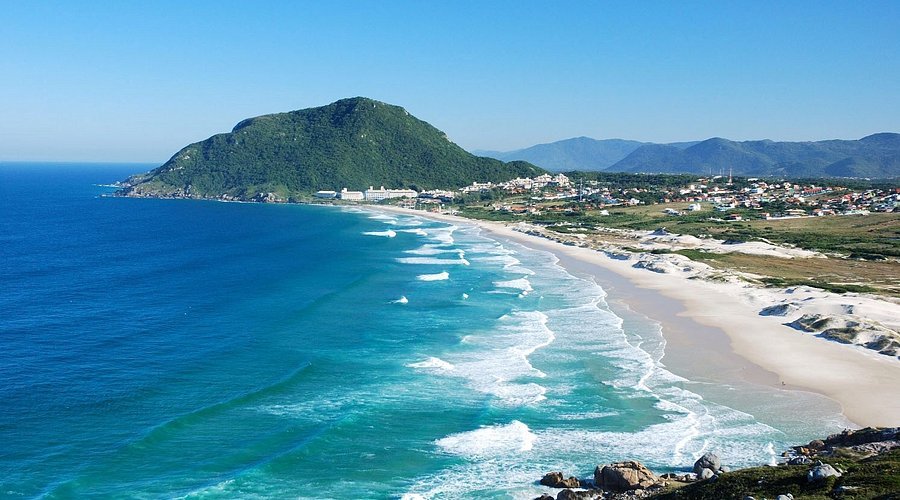
Florianópolis, known as the "Magic Island" (Ilha da Magia), is one of Brazil’s most breathtaking beach destinations. Located in the southern state of Santa Catarina, this stunning island boasts over 40 pristine beaches, vibrant nightlife, and a rich cultural heritage. Whether you’re seeking adventure, relaxation, or a mix of both, a beach escape to Florianópolis promises an unforgettable experience.
Getting to Florianópolis
The easiest way to reach Florianópolis is by flying into Hercílio Luz International Airport (FLN), which offers domestic and limited international flights. From the airport, it’s a short drive to the city center and the island’s many stunning beaches.
Top Beaches to Explore
1. Praia Mole – The Surfer’s Paradise
Famous for its powerful waves and golden sands, Praia Mole is a favorite among surfers and adventure seekers. The beach is surrounded by lush green hills and is known for its vibrant, youthful energy. Whether you're riding the waves or simply soaking up the sun, Praia Mole is a must-visit.
2. Lagoinha do Leste – A Hidden Gem
For those looking for a secluded escape, Lagoinha do Leste is one of Florianópolis’ most untouched beaches. Accessible only by boat or a scenic hiking trail, this remote paradise offers crystal-clear waters, soft white sand, and stunning cliffs that provide breathtaking views.
3. Joaquina Beach – The Ultimate Sandboarding Spot
Joaquina Beach is not only a top surfing destination but also famous for its massive sand dunes, where visitors can experience sandboarding. With strong waves and a lively beach scene, Joaquina is a perfect spot for adventure lovers.
4. Campeche Beach – The Caribbean of Brazil
With its turquoise waters and powdery white sand, Campeche Beach is often compared to the Caribbean. Visitors can take a short boat ride to Campeche Island, a protected area with stunning natural beauty, hiking trails, and opportunities for snorkeling.
5. Jurerê Internacional – Luxury and Elegance
For those looking for a more upscale beach experience, Jurerê Internacional is the place to be. This beach is lined with luxury resorts, high-end beach clubs, and fine dining options. It’s perfect for travelers who enjoy a mix of relaxation and vibrant nightlife.
Things to Do Beyond the Beaches
- Explore Lagoa da Conceição: A charming lagoon surrounded by cafés, restaurants, and water sports activities.
- Visit Santo Antônio de Lisboa: A historic neighborhood with colonial Portuguese architecture and stunning sunset views.
- Hike to Morro da Cruz: A viewpoint offering panoramic views of Florianópolis and its coastline.
Best Time to Visit Florianópolis
The best time for a beach escape in Florianópolis is during the summer months (December to March) when temperatures are warm, and the ocean is perfect for swimming. However, spring (September to November) and autumn (April to June) offer fewer crowds and pleasant weather.
Morning:
- Take a flight to Florianópolis, known for its stunning beaches and laid-back atmosphere.
- Check into a beachfront resort.
Afternoon:
- Relax on Praia Mole or Joaquina Beach, famous for their golden sands and surf-friendly waves.
- Take a boat tour to the secluded Lagoinha do Leste Beach.
Evening:
- Dine at a beachside restaurant with fresh seafood and Brazilian cocktails.
Day 7: São Paulo & Departure

As Brazil’s largest city and economic hub, São Paulo offers a dynamic blend of culture, gastronomy, and modern urban life. Whether you’re ending your Brazilian journey here or spending a few days exploring before departure, this metropolis promises an unforgettable experience. From world-class museums and vibrant nightlife to its diverse culinary scene, São Paulo is a city that never sleeps.
Exploring São Paulo: A City of Culture and Innovation
1. Avenida Paulista – The Heart of the City
One of the most famous avenues in Brazil, Avenida Paulista is the financial and cultural heartbeat of São Paulo. Here, visitors can explore museums, shopping centers, and street performances that reflect the city’s creative energy.
- MASP (São Paulo Museum of Art): Home to one of the most impressive collections of European and Brazilian art in Latin America.
- Parque Trianon: A green oasis amidst the urban landscape, perfect for a relaxing stroll.
- Livraria Cultura: One of the city’s most iconic bookstores, ideal for book lovers and cultural enthusiasts.
2. Liberdade – A Taste of Japan in Brazil
São Paulo is home to the largest Japanese community outside of Japan, and the neighborhood of Liberdade offers an authentic experience of Japanese culture. Visitors can enjoy:
- Traditional ramen and sushi restaurants.
- The bustling Liberdade Market on weekends, featuring Asian street food and crafts.
- Japanese temples and cultural centers.
3. Ibirapuera Park – São Paulo’s Green Escape
Often compared to New York’s Central Park, Ibirapuera Park is a must-visit for those looking to enjoy nature, culture, and relaxation before departure.
- Oscar Niemeyer-designed buildings house art museums and cultural spaces.
- Locals jog, bike, and practice yoga in the park’s vast green spaces.
- The Ibirapuera Auditorium hosts live music performances in a stunning architectural setting.
4. Mercado Municipal – A Food Lover’s Paradise
Before leaving São Paulo, indulge in the city’s rich culinary scene at the Mercado Municipal (Municipal Market). Here, you can try:
- The famous Mortadella sandwich – a must-try local specialty.
- Exotic fruits and artisanal cheeses.
- Freshly prepared Brazilian delicacies like pastel de bacalhau (cod pastry).
Departure from São Paulo
São Paulo is served by two major airports:
- Guarulhos International Airport (GRU): The main international gateway with flights to major global destinations.
- Congonhas Airport (CGH): Mainly serves domestic flights, conveniently located near the city center.
Travel Tips for Departure:
- Arrive early: São Paulo traffic can be unpredictable, so allow extra time for airport transfers.
- Use airport lounges: Many lounges at GRU offer comfort and relaxation before your flight.
- Shop for souvenirs: Pick up Brazilian coffee, Havaianas sandals, or local handicrafts at the airport.
Morning:
- Fly to São Paulo, Brazil’s largest city and cultural hub.
- Visit the São Paulo Museum of Art (MASP) and stroll along Avenida Paulista.
Afternoon:
- Explore the historic district of Liberdade, known for its Japanese influence.
- Enjoy a final Brazilian meal before heading to the airport for your departure.

